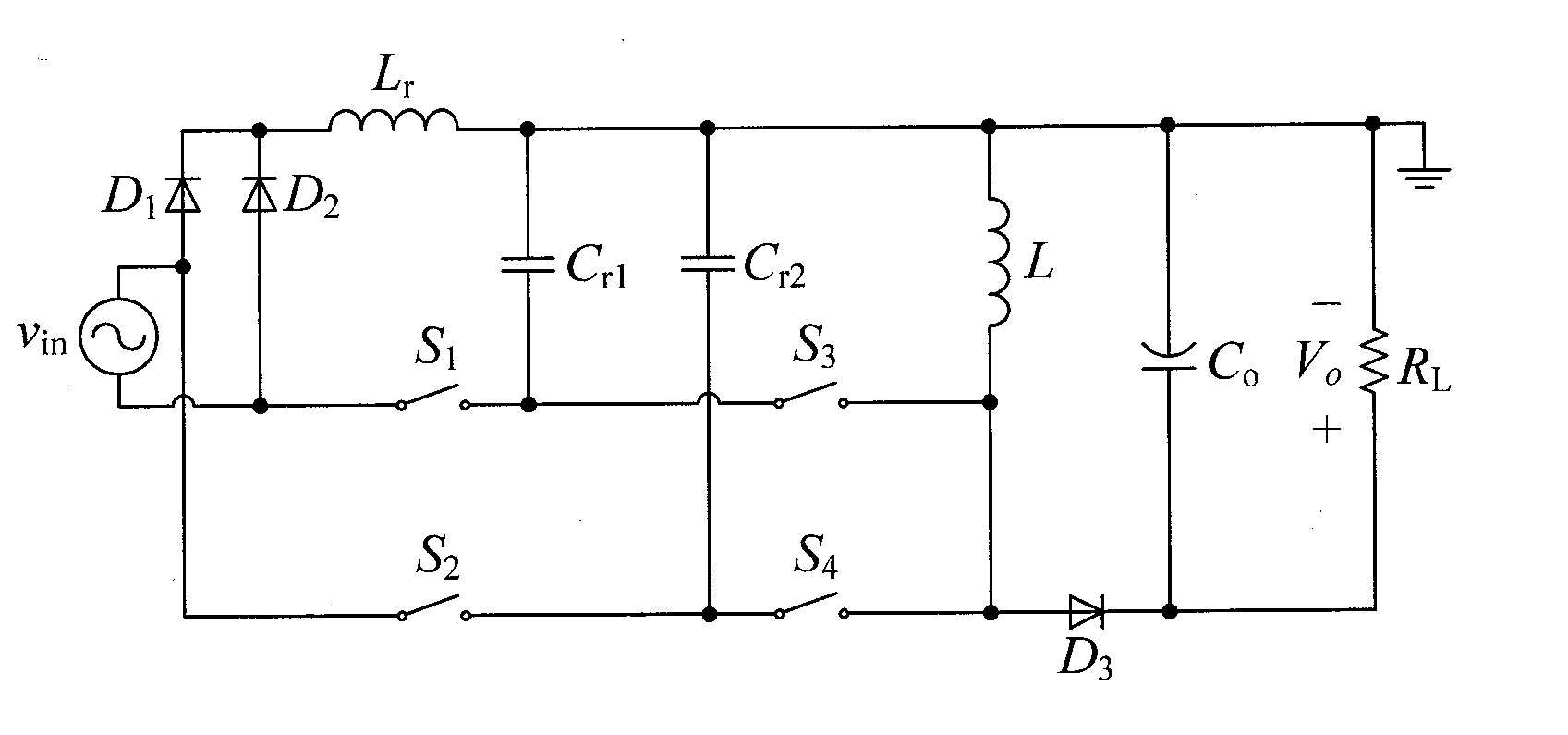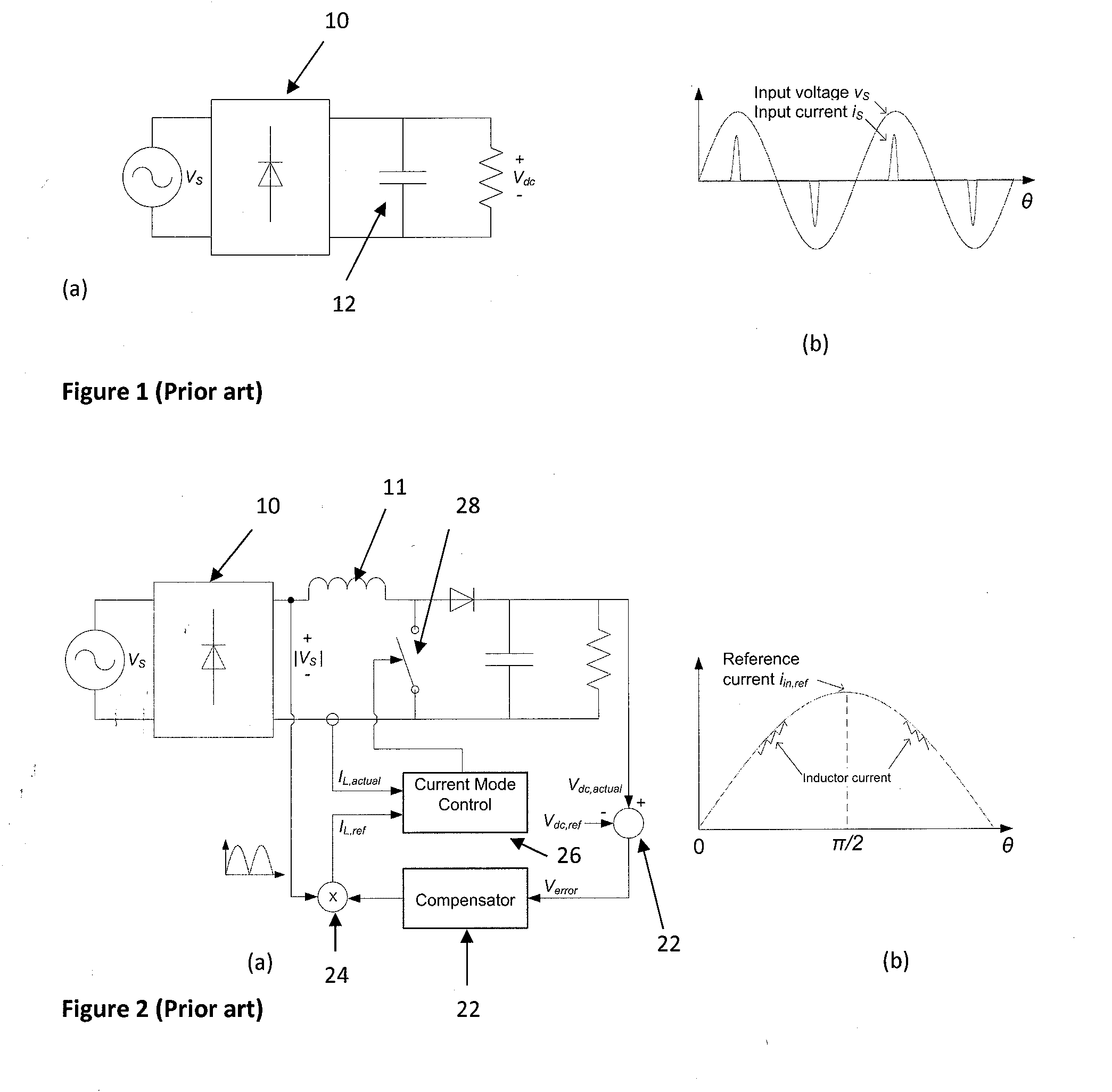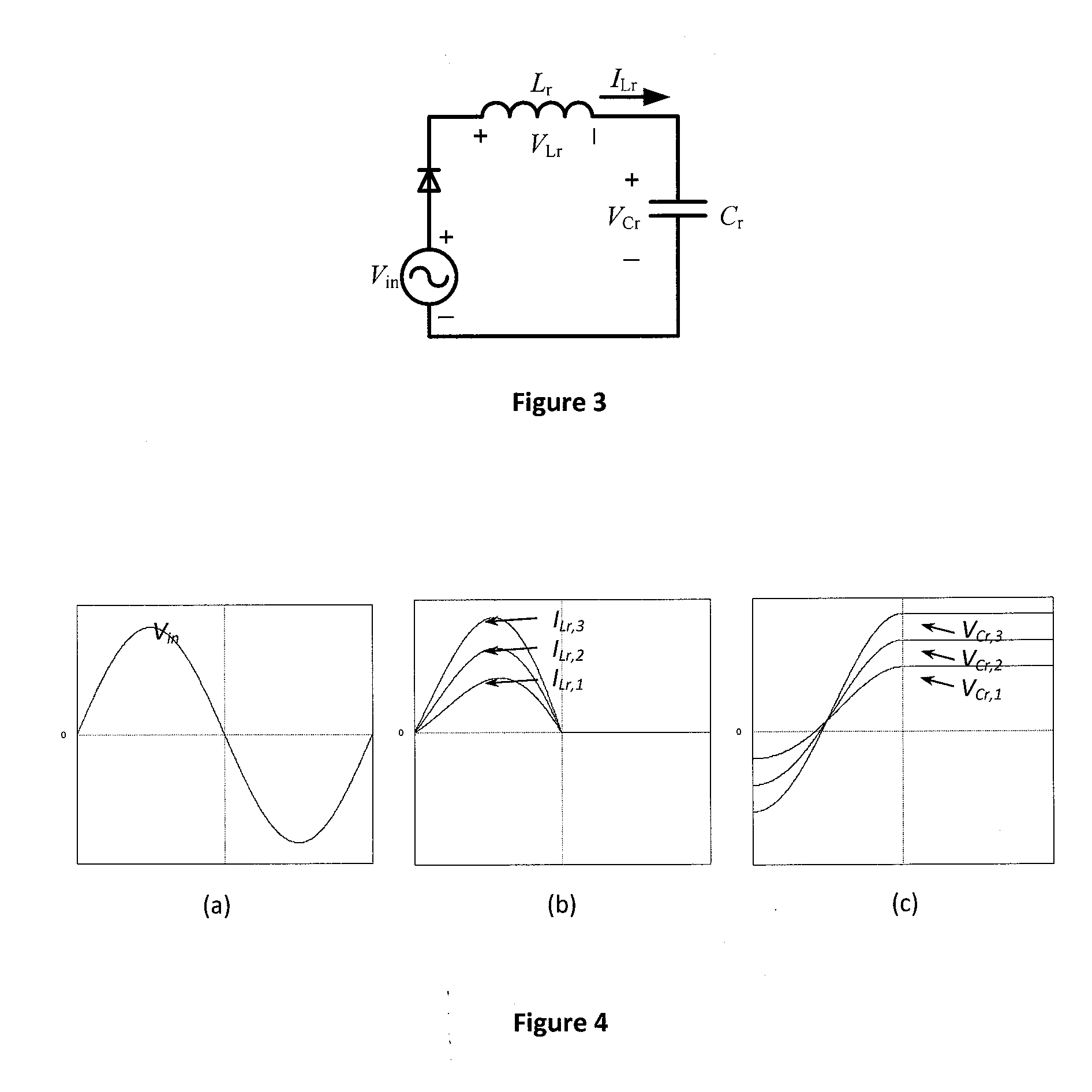Electronic Apparatus and Control Method for High Frequency AC to DC Conversion
a technology of electronic apparatus and control method, applied in the direction of power electronics conversion, power conversion system, climate sustainability, etc., can solve the problems of poor power factor, poor power transfer capability, poor power factor, etc., and achieve the effect of small switching loss and easy fabrication into a single integrated circuit (ic)
- Summary
- Abstract
- Description
- Claims
- Application Information
AI Technical Summary
Benefits of technology
Problems solved by technology
Method used
Image
Examples
Embodiment Construction
[0023]According to the present invention, a new concept is proposed to realize high frequency AC to DC conversion with input AC side power factor correction (PFC) and output DC voltage regulation. Considering a half wave rectifier with an inductive-capacitive (LC) load as shown in FIG. 3. The voltage source Vin is ac and its angular frequency is ω. A LC load is selected such that its angular resonance frequency ωr=1 / (2 π{square root over (LrCr)}) is equal to the angular frequency of the source. For the positive half-cycle of the source in this circuit, the diode is forward biased. The current produced by the LC resonance will be forced into a sinusoidal form. The power flow is controlled by the characteristic impedance Zr={square root over (LrCr)} and the initial condition of the capacitor VCr,0. FIGS. 4(a)- 4(c) depict the input voltage and corresponding current and voltage waveforms, respectively, of the rectifier under different initial values of the capacitor. For the negative h...
PUM
 Login to View More
Login to View More Abstract
Description
Claims
Application Information
 Login to View More
Login to View More - R&D
- Intellectual Property
- Life Sciences
- Materials
- Tech Scout
- Unparalleled Data Quality
- Higher Quality Content
- 60% Fewer Hallucinations
Browse by: Latest US Patents, China's latest patents, Technical Efficacy Thesaurus, Application Domain, Technology Topic, Popular Technical Reports.
© 2025 PatSnap. All rights reserved.Legal|Privacy policy|Modern Slavery Act Transparency Statement|Sitemap|About US| Contact US: help@patsnap.com



